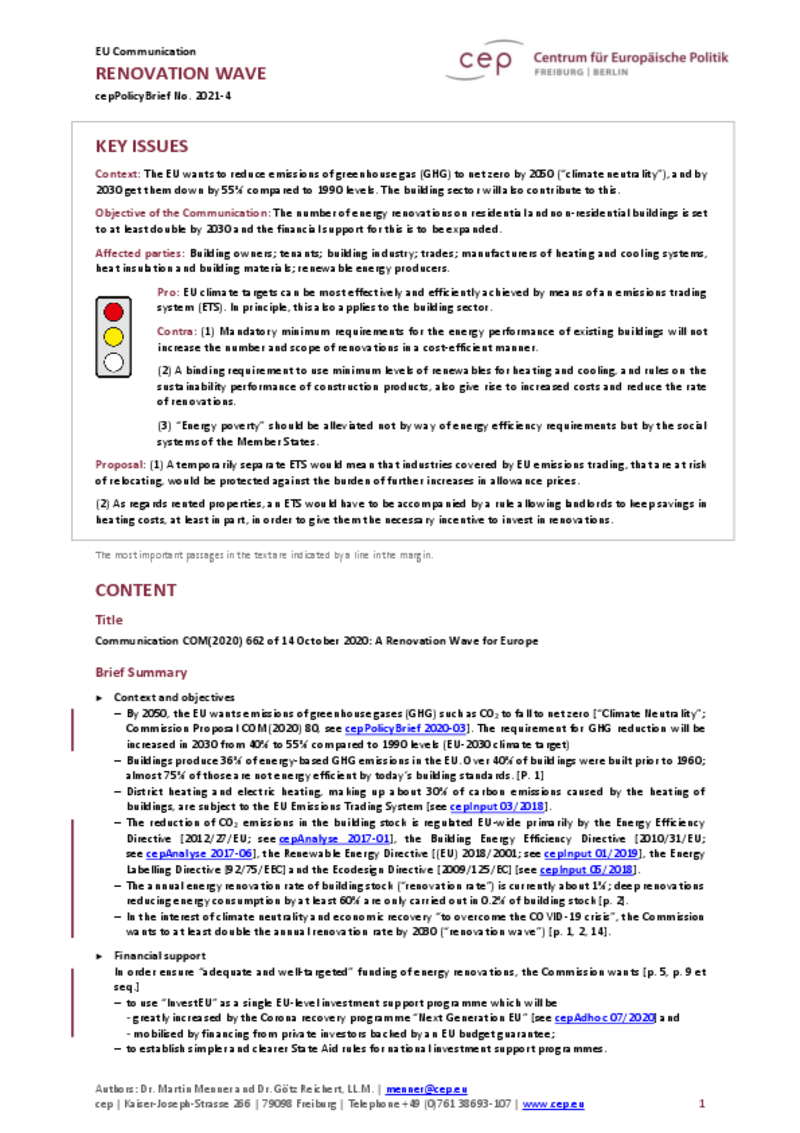
Energy
Renovation Wave (cepPolicyBrief COM2020_662)
cepPolicyBrief
The expert of the Freiburg think tank recommends an EU-wide emissions trading system (ETS) for the building sector. "The EU's climate goals can be achieved most effectively and efficiently through an emissions trading system. This also applies in principle to the building sector," says Menner, who has analysed the so-called “renovation wave strategy” for energy-efficient building refurbishments.
In this context, Menner demands that a good part of the ETS revenues be distributed back to the population, taking into account tenants as well as landlords. "Overall, for rented flats, an ETS must be flanked with a regulation that allows heating cost savings to remain at least in part with the landlord to give him the necessary incentive for renovation investments," says Menner. A separate ETS for buildings in the EU – similar to the national ETS in Germany – would protect industries covered by the EU ETS that are threatened by carbon leakage from the burden of additionally rising certificate prices.
Download PDF
| cepAnalyse (publ. 03.16.2021) | 219 KB | Download | |
 | |||



